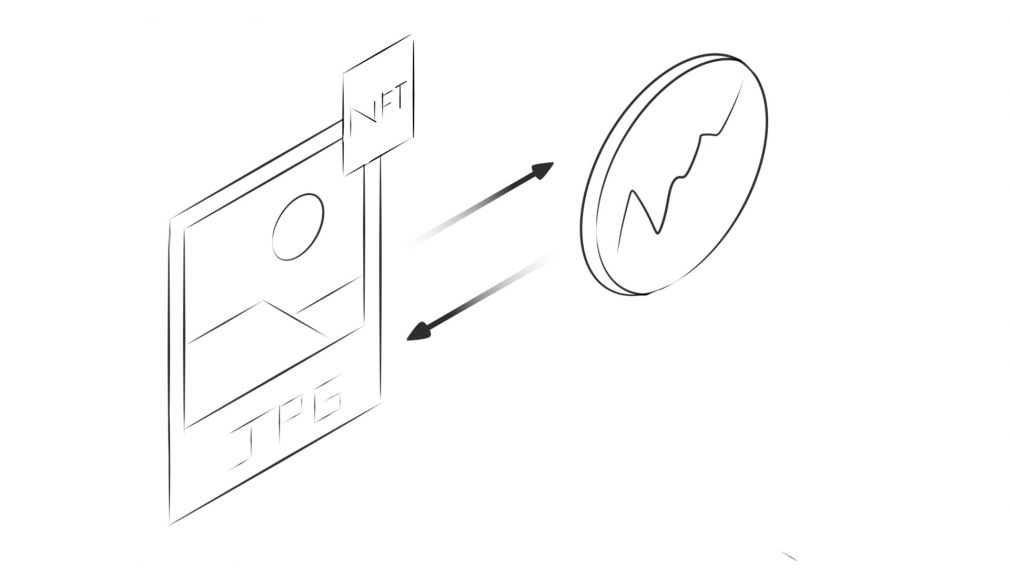NFTs Provide Unique Opportunities for NAMM Members

The buzz around digital currencies and the newest iteration of the concept, non-fungible tokens (NFTs), may have come out of nowhere. However, the music products industry is simply jumping on a commerce trend that has been around for the last 40 years.
The first mention of digital currency occurred in a 1983 research paper by David Chaum, who later found DigiCash. Digital currency is “any currency, money, or money-like asset that is primarily managed, stored, or exchanged on digital computer systems, especially over the internet.” It may seem like a futuristic concept, but digital currency is becoming more commonplace in world economies. A prime example of the growing acceptance of digital currency is the recent June 2021 adoption of Bitcoin as legal tender in El Salvador, the first nation to recognize the cryptocurrencies validity, with Cuba following suit in August 2021.
The rise in popularity of digital currency has given birth to the idea of NFTs, which are “a unique and non-interchangeable unity of data stored on a digital ledger.” What does this mean? NFTs represent photos, videos, audio, or other digital files and portray them as unique items, like a traditional certificate of authenticity for a physical collectible. The ownership of a NFT is certified using blockchain technology (a list of records that include a timestamp and transaction data).
NFTs took the music and music products industry by storm earlier this year, first with artists and touring musicians utilizing NFTs to recoup income lost during the COVID-19 pandemic. In February, a report indicated that NFTs had already generated $25 million for the music industry. In March, rock band Kings of Leon released its newest album, When You See Yourself, as a NFT. In addition, other sectors of the music and touring industry have announced NFT initiatives including, Live Nation’s recent announcement of “Live Stubs,” a NFT digital ticket stub collectible.
Album releases, touring, and live performances are a natural fit for the NFT market. There has always been a demand for music-based physical collectibles, so naturally, a digital version is a predictable transition. However, an even more unique application of NFTs is beginning to make an appearance from instrument manufacturers. NAMM Member and guitar manufacturer ESP has recently developed its first NFT, a series of limited-edition digital artworks based on its Pyrograph electric guitars. Jeff Klopmeyer, who has assisted ESP Guitars’ marketing strategy for the past 17 years said, “We saw NFTs as a new and interesting way for ESP Guitar fans to form a stronger connection to the brand. In many ways, NFTs are like any other branding opportunity, like promotional apparel merchandise. If customers are already into digital collectibles and blockchain technology, they might like to own an NFT from a brand they already support and enjoy.”
ESP is applying NFTs in the traditional approach, providing customers with a chance to own unique artwork. However, the conversation for NFTs and their possibilities have quickly turned to the music publishing sector. Guitarist Joe Bonamassa became the first musician to sell his music publishing as a NFT. Bonamassa auctioned off the rights to the master and publishing of his song, “Broken Record,” which was penned and recorded as a NFT. While Bonamassa began on his NFT journey specifically to make music specifically for the digital collector, the idea that music created before the NFT craze could be intertwined and sold off as a NFT is exciting yet murky at best. According to Music Business Worldwide’s recent article, “NFTs: What Songwriters and Music Publishers Need to Know” (https://www.musicbusinessworldwide.com/nfts-what-songwriters-and-music-publishers-need-to-know/), there presents a plethora of uncharted and unique potential for song rights to become NFTs, including an agreement on pricing between all involved parties, copyright responsibilities, and administration of future licensing deals, all aspects the novice collector may not be aware of upon purchase.
Klopmeyer offered a bit of wisdom for NAMM Members looking to break into the world of NFTs, “First, work with a reputable NFT firm who has direct experience in the music/entertainment industries and related fields. Second, be aware that NFTs can be mildly controversial. Some people express concerns about the environmental impact of NFT creation and sales, and others don't understand how digital collectibles can hold value, so you can count on getting some negative feedback in that regard. Third, make sure the NFT creative is consistent with your other brand marketing efforts. ESP took all of this into consideration before moving ahead with our first set of NFTs.”
For more information on ESP’s NFTs, please visit https://fanaply.com/creator/espguitars